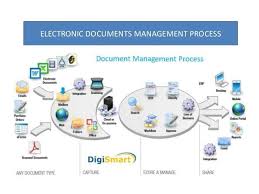
The Importance of a Digital File Management System
In today’s digital age, the amount of data generated and stored by businesses and individuals is growing exponentially. Managing this data efficiently and securely has become a critical aspect of operations. This is where a digital file management system plays a crucial role.
A digital file management system is a software solution that helps organize, store, retrieve, and track digital files effectively. It provides a centralized repository for all types of files, such as documents, images, videos, and more. Here are some key reasons why implementing a digital file management system is essential:
- Organization: With a file management system in place, files are structured in a logical manner, making it easy to locate and access them when needed. This improves productivity and saves time that would otherwise be spent searching for misplaced files.
- Security: Data security is paramount in today’s data-driven world. A file management system allows you to set access controls, encryption, backups, and other security measures to protect sensitive information from unauthorized access or loss.
- Collaboration: Collaboration among team members is simplified with a digital file management system. Users can share files, work on them simultaneously, track changes, and maintain version control to ensure everyone is working on the latest document.
- Compliance: Many industries have strict regulations regarding data storage and privacy. A file management system helps ensure compliance with these regulations by providing audit trails, retention policies, and other features that facilitate adherence to legal requirements.
Implementing a digital file management system can transform how your organization handles its data. By streamlining workflows, enhancing security measures, promoting collaboration, and ensuring compliance with regulations, you can optimize your operations and focus on what matters most – achieving your business goals.
Top 5 Tips for Effective Digital File Management
- Organize your files into folders based on a logical structure.
- Use descriptive file names to easily identify the contents of each file.
- Regularly backup your files to prevent data loss.
- Implement a consistent naming convention for all files to maintain uniformity.
- Utilize metadata and tags to enhance searchability and categorization of files.
Organize your files into folders based on a logical structure.
To optimize your digital file management system, it is crucial to organize your files into folders based on a logical structure. By categorizing and grouping related files together within designated folders, you can streamline the retrieval process and enhance overall efficiency. This approach not only facilitates easy access to specific files but also promotes a systematic approach to managing and maintaining your digital assets. A well-structured folder system ensures that each file has its place, making it easier to locate, update, and share information effectively.
Use descriptive file names to easily identify the contents of each file.
When managing digital files, using descriptive file names is a simple yet effective tip that can greatly enhance organization and efficiency. By naming files in a way that clearly indicates their contents, users can quickly identify and locate the specific information they need without having to open each file individually. Descriptive file names not only save time but also contribute to a more streamlined and intuitive file management system, ultimately improving productivity and reducing the likelihood of confusion or errors.
Regularly backup your files to prevent data loss.
Regularly backing up your files is a crucial practice in digital file management to safeguard against data loss. By creating backup copies of your important files and storing them in secure locations, you ensure that even in the event of hardware failure, accidental deletion, or cyber threats, your data remains protected and accessible. Implementing a consistent backup strategy not only provides peace of mind but also serves as a proactive measure to mitigate the risks associated with unforeseen circumstances, ultimately preserving the integrity and continuity of your valuable information.
Implement a consistent naming convention for all files to maintain uniformity.
Implementing a consistent naming convention for all files is a crucial tip in digital file management systems. By establishing a standardized approach to naming files, organizations can ensure uniformity and clarity across their data repositories. Consistent file naming makes it easier to search for and identify specific files, reduces the risk of duplicates or version control issues, and streamlines collaboration among team members. This simple yet effective practice enhances overall organization and efficiency in managing digital files.
Utilize metadata and tags to enhance searchability and categorization of files.
By utilizing metadata and tags within a digital file management system, users can significantly enhance the searchability and categorization of their files. Metadata provides valuable information about a file, such as its creation date, author, keywords, and more, making it easier to search for specific files based on these attributes. Tags offer a flexible way to categorize files according to custom labels or descriptors, allowing for efficient organization and quick retrieval of relevant documents. Incorporating metadata and tags into your file management strategy can greatly improve productivity and streamline your workflow by ensuring that files are easily accessible and well-organized.
